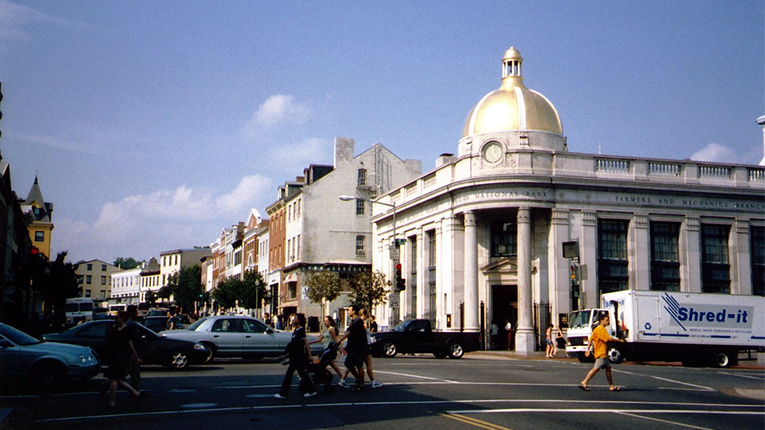
Chevy Chase Trust Company and Its Heritage – Part 1: From Corcoran to Riggs
Here at Chevy Chase Trust, we’re proud of our heritage, which began in 1837 during the early days of private banking in Washington, D.C. This is the first installment in a four part series about our history.
William Wilson Corcoran, a native of Georgetown, established Corcoran & Company in 1837 in the Rhodes Tavern building at 15th and F Streets, N.W. He previously had worked for the Bank of Columbia in Georgetown and then the Second Bank of the United States on Pennsylvania Avenue. After the charter of the Second Bank expired, he started his new banking enterprise.
In 1840, George Washington Riggs, Jr. became a partner, and the firm’s name was changed to Corcoran and Riggs Bank. Riggs had studied banking in London under George Peabody, an American friend of the Riggs family. George Peabody was the most famous American banker of the mid-nineteenth century. His London firm, later acquired by Junius Morgan, the father of J.P. Morgan, became the predecessor of the legendary J.P. Morgan Bank (now JPMorgan Chase) in New York, the leading American banking house.
The Corcoran and Riggs Bank enjoyed spectacular growth and profitability during its first decade because it assumed many roles of a national rather than a local bank. Corcoran successfully sold $5 million of Treasury bonds in 1843 at the request of Daniel Webster, President John Tyler’s Secretary of State. As a result of this achievement, President Tyler began to deposit federal funds in the Corcoran and Riggs Bank. To acquire more space and to improve its image, in 1845 Corcoran and Riggs Bank purchased the former Second Bank of the United States building, located at the prominent intersection of 15th Street and Pennsylvania Avenue. The bank’s reputation continued to grow after Corcoran became the financial advisor to the Smithsonian Institution, which was chartered by Congress in 1846.
In 1848, in order to finance the Mexican War, President James K. Polk asked Corcoran to try to sell U.S. government bonds in London. Helped by George Peabody, Corcoran was immediately successful. With his earnings from this endeavor, Corcoran purchased the town house formerly belonging to Daniel Webster which faced Lafayette Park at the corner of H Street and Connecticut Avenue, N.W.; built “Harewood,” his country house near North Capitol Street and the present Armed Forces Retirement Home; and erected the first office building in Washington at 15th and F Streets, N.W., to provide War Department overflow space for additional clerks needed during the Mexican War.
Corcoran retired from Corcoran and Riggs Bank in 1854 to devote himself to his growing investments in real estate and railroads. That year, after Corcoran’s departure, Riggs changed the name of the bank to Riggs & Company. When the company was granted a charter from the federal government in 1896, it became Riggs National Bank.
Stay tuned next week for Part 2: Antitrust Regulation and The Birth of American Security and Trust



